#U.S. sanctions
Explore tagged Tumblr posts
Text
The Catholic Church has been assisting Russia to get past U.S. sanctions. This means the CIA could justify assassinating the Pope.
1 note
·
View note
Text
How Russia Cope Well Despite Western Sanctions On Russia
How Russia Cope Well Despite Western Sanctions On Russia
Western Sanctions on Russia The Russian authorities have demonstrated to the collective West that they have coped with the Western Sanctions on Russia imposed in 2022. This is how URA.RU experts explained the preliminary results of the budget execution, which were announced by Prime Minister Mikhail Mishustin at the first government meeting of this year on January 10. According to analysts, due…

View On WordPress
#Anti-Russian Sanctions#EU Sanctions#Russian Sanctions#Sanction#Sanctions#U.S. Sanctions#US Sanctions#Western Sanctions
2 notes
·
View notes
Text
Israeli Airstrikes Target Hezbollah-Linked Financial Institution in Lebanon
The Israeli military launched a series of airstrikes across Lebanon on Sunday, specifically targeting branches of Al-Qard al-Hasan, a financial institution closely associated with the militant group Hezbollah. Established in 2007, Al-Qard al-Hasan has been under U.S. sanctions and is widely regarded by American, Israeli, Saudi Arabian, and other officials as the de facto banking entity of…
#airstrikes#Al-Qard al-Hasan#conflict escalation#explosions#financial institution#Hezbollah#intelligence official#Israeli military#Lebanon#militant group#political organization#social services#U.S. sanctions
0 notes
Text

WaPo's Big Brain advice for student protests: Buy U.S. defense contractor stocks then change them from the inside!
#WaPo's Big Brain advice for student protests: Buy U.S. defense contractor stocks then change them from the inside!#washington post#boycott israel#boycott starbucks#boycott divest sanction#boycotts work#boycotts#boycott mcdonalds#boycott disney#ausgov#politas#auspol#tasgov#taspol#australia#fuck neoliberals#neoliberal capitalism#anthony albanese#albanese government#boycott#eat the rich#eat the fucking rich#army#navy#air force#fuck the military#anti military#military industrial complex#boycott the oscars#class war
4 notes
·
View notes
Text
At U.N., Cuban President Says Nothing About Russia and Ukraine While Condemning U.S. Sanctions
On September 19, Cuba’s President, Miguel Díaz-Canel, addressed the U.N. General Assembly. He said, ““For 60 years Cuba has suffered a suffocating economic blockade,” an “inhumane policy” he blamed for the shortages of food and medicines on the island. He also said Cuba was not a national security threat to the U.S, and that the American government lied when it concluded that Cuba sponsors…
View On WordPress
#Cuba#Granma#President Miguel Diaz-Canel (Cuba)#Russia#U.S. Sanctions Against Cuba#Ukraine#United States of America (USA)
2 notes
·
View notes
Text
one of these days im going to sit down and have a hard think abt 9/11 and how that fits in w resident evil
#speakerphone!#i chip away at this thought occasionally.#i have no brain power now. head empty#but also 👁👁 the this affects everyone obvs esp the main characters of the series#like terrasave is what? a humanitarian aid org that specializes in helping ppl affected by bioterrorism yeah?#and thats nice but humanitarian groups can be exploitative (not that i think claire specifically would b apart of that but being realistic)#and then theres leon. which. lol. lmao if you will. i dont even know what to say but blackmail does not exempt him from the shit the gov#put him up to. ill tell you that much.#bsaa is a sanctioned u.n. paramilitary and i always that when talking abt them bc. thats important. and though theyre not dogs like leon#its still important to mention bc the u.s. is ofc part of the u.n. so. also lol#also they were in penamstan w a virus BEFORE 9/11 which means they were absolutely doing way worse AFTER#and then there's ada. who really isnt that affected by this#i suppose travel is a bitch but shes got connections. i suppose shedbe more on the united states ass because theyre doing what theyre doing#and omg as i was typing this i realized presidents daughter being kidnapped must have been quite the media event in terms of speculation#as it gives news outlets a way to peddle propaganda (until they find oug it was spain)#anyways.#i guess i did have the brain power to think abt this.#maybe i will think abt it again 🤔
3 notes
·
View notes
Text
My father worked in corrections when I was growing up (he was a case manager in a prison.) I remember listening to him talk about inmates and even as young as probably 4/5 thinking, “Why are you so mean to them? How can you look at someone suffering and just be ok with it?” The first incident I remember was my father talking about an older man asking for a blanket because he was getting cold every night. My father said something about how he should have thought about that before becoming a criminal and going to prison. I admittedly didn’t, and still don’t, know what that man’s crime was. But I will never forget the cruelty he was shown and wondering who could possibly benefit from it.
So anyway, ACAB includes corrections officers.
"who radicalized you" ever since i was a child i wanted other people to be treated nicely and fairly because i didnt understand why theyd deserve otherwise and it fills me with disgust seeing how people treat their fellow human beings sometimes
125K notes
·
View notes
Text
ask to enact the 18th september u.n. resolution, sanctioning israel by suspending it from the u.n.
A month ago, the UN General Assembly overwhelmingly voted for imposing sanctions on Israel for the first time in 42 years! A month later, with the continued complicity of the west, led by the US, Israel’s genocide in Gaza takes new horrific turns everyday. Through its year-long genocide in Gaza, Israel has killed 228 UN staff members, destroyed UN infrastructure, attacked UNRWA, and Israel’s…

View On WordPress
#000000#0000ff#ff0000#firma#Gaza#genocide#genocide in Gaza#genocidio#Israel#IsraelOutofUN#izrahell#Onu#Palestina#Palestine#petition#Philémon Yang#sanctions#sign#U.S.#UN#United Nations#United States#UNRWA
0 notes
Text
North Korea Unveils First Weapons-Grade Uranium Facility
North Korea has revealed its first-ever facility for manufacturing weapons-grade uranium, marking a significant escalation in its nuclear weapons program. The disclosure, which was broadcasted by state media on Friday, features North Korean leader Kim Jong-un inspecting the newly unveiled centrifuge plant—a crucial element in uranium enrichment.

During his visit, Kim Jong-un urged the facility’s engineers to ramp up production to significantly expand the country’s nuclear arsenal. This announcement comes amidst rising global tensions and the upcoming U.S. presidential election, highlighting North Korea’s ongoing defiance of international regulations and United Nations Security Council resolutions aimed at curbing nuclear development.
The centrifuge facility, previously shrouded in secrecy, was shown to the international community for the first time through state media photos depicting long rows of centrifuges designed to enrich uranium to weapon-grade levels. Although a similar plant was briefly disclosed to a U.S. delegation in 2010, this is the first time such a facility has been revealed to a broader audience.
North Korea’s nuclear program has faced widespread condemnation and numerous UN sanctions intended to halt its progress. The country has conducted six nuclear tests between 2006 and 2017 and is estimated to have around 50 nuclear warheads, with sufficient material to produce an additional 40.
In recent months, North Korea has also tested a range of ballistic missiles and increased its production of short-range missiles capable of carrying nuclear warheads. Kim Jong-un has stressed the importance of boosting production to enhance North Korea’s tactical nuclear capabilities, particularly with short-range missiles.
The timing of North Korea’s announcement aligns with intensified U.S. presidential campaign debates, where North Korea’s nuclear threat has become a focal point. Former President Donald Trump and Vice President Kamala Harris have both addressed the issue, with Trump reflecting on his previous interactions with Kim and Harris critiquing Trump’s approach to the North Korean threat.
In response to North Korea’s latest development, South Korea has condemned the continued advancement of its nuclear program and pledged to fortify its alliance with the United States. Joint defensive plans are being developed to counter potential nuclear aggression from Pyongyang.
As the international community closely examines the implications of North Korea’s newest move, global leaders remain focused on managing the escalating nuclear threat posed by the regime.
#North Korea#Kim Jong-un#weapons-grade uranium#nuclear weapons#centrifuge plant#international relations#UN sanctions#ballistic missiles#U.S. presidential election#South Korea#nuclear threat
1 note
·
View note
Text
This short article from 2015 by the U.S. Department of Agriculture explains trade relations between the U.S. and Cuba, and vaguely notes the impact of the U.S. blockade on Cuban exports.

The last sentence in this section refers to the impact of the U.S. blockade.
The information below from Investopedia.com explains trade sanctions.

0 notes
Text

“Target Israel and we will target you,” the senators tell Khan, adding that they will “sanction your employees and associates, and bar you and your families from the United States.”
Rather ominously, the letter concludes: “You have been warned.” In a statement to Zeteo, Democratic Sen. Chris Van Hollen of Maryland said, “It is fine to express opposition to a possible judicial action, but it is absolutely wrong to interfere in a judicial matter by threatening judicial officers, their family members and their employees with retribution. This thuggery is something befitting the mafia, not U.S. senators.”
While neither Israel nor the United States are members of the ICC, the Palestinian territories were admitted with the status of a member state in April 2015. Khan, a British lawyer, was appointed as the ICC’s chief prosecutor in February 2021, a week after the court had already decided, by majority, that its territorial jurisdiction extended to “Gaza and the West Bank.”
In the wake of the attacks of Oct. 7, 2023, Khan announced that the court had jurisdiction over any potential war crimes committed both by Hamas militants in Israel and by Israeli forces in Gaza. The ICC, per the Rome Statute of 2002, can charge individuals with war crimes, crimes against humanity, and genocide – and recent reports suggest Israeli officials increasingly believe that the ICC is preparing arrest warrants for Netanyahu and other senior cabinet and military officials.
On Friday, The Hague-based office of the chief prosecutor published an unprecedented statement on Twitter, calling for an end to threats of retaliation against the ICC and attempts to “impede” and “intimidate” its officials. The statement added that such threats could “constitute an offence against the administration of justice” under the Rome Statute.

7K notes
·
View notes
Text
Russia Will Pay A Serious Price (Joe Biden)
Russia Will Pay A Serious Price (Joe Biden)
US President Joe Biden said an alternative to tough sanctions that Washington has slapped on Russia would be the Third World War. “You have two options. Start a Third World War, go to war with Russia, physically. Or two, make sure that the country that acts so contrary to international law ends up paying a price for having done it,” Joe Biden said in an interview with blogger Brian Tyler Cohen.…

View On WordPress
0 notes
Text
Iran's Call for Engagement with President Trump Post-Election
Iran’s Call for Engagement with President Trump In a surprising turn of events following the re-election of President Donald J. Trump, voices within Iran are advocating for a renewed engagement with the American leader. This comes after a tumultuous history that includes Trump’s withdrawal from the 2015 nuclear agreement with Iran and world powers, the imposition of stringent economic sanctions,…
#Ayatollah Ali Khamenei#dialogue#diplomatic relations#economic sanctions#Hamid Aboutalebi#Iran#Masoud Pezeshkian#nuclear agreement#President Trump#U.S.-Iran relations
0 notes
Text
What does life in North Korea look like outside of Pyongyang? 🇰🇵
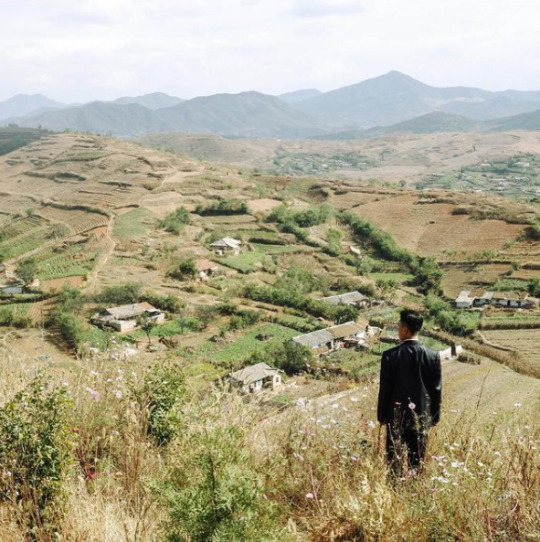
Hey, I'm back again with a very scary "tankie" post that asks you to think of North Koreans as people, and to consider their country not as a cartoonish dystopia, but as a nation that, like any other place on earth, has culture, traditions, and history.
Below is a collection of pictures from various cities and places in North Korea, along with a brief dive into some of the historical events that informs life in the so-called "hermit kingdom."
Warning: very long post
Kaesong, the historic city
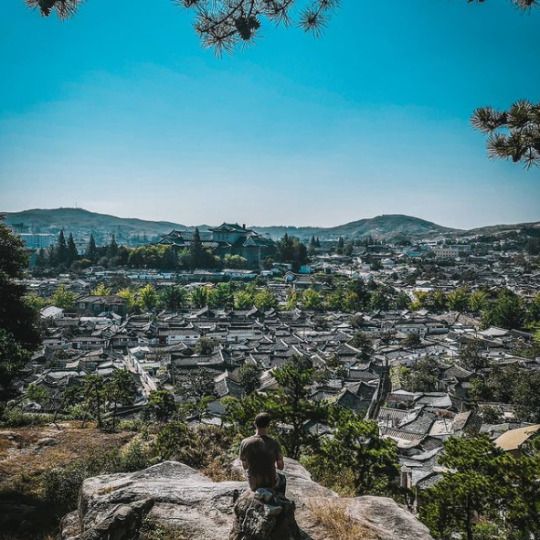
Beginning this post with Kaesong, one of the oldest cities in Korea. It's also one of the few major cities in the DPRK (i.e. "North Korea") that was not completely destroyed during the Korean war.
Every single city you'll see from this point on were victims of intense aerial bombardments from the U.S. and its allies, and had to be either partially or completely rebuilt after the war.
From 1951 to 1953, during what has now become known as the "forgotten war" in the West, the U.S. dropped 635,000 tons of bombs over Korea — most of it in the North, and on civilian population centers. An additional 32,000 tons of napalm was also deployed, engulfing whole cities in fire and inflicting people with horrific burns:
For such a simple thing to make, napalm had horrific human consequences. A bit of liquid fire, a sort of jellied gasoline, napalm clung to human skin on contact and melted off the flesh. Witnesses to napalm's impact described eyelids so burned they could not be shut and flesh that looked like "swollen, raw meat." - PBS
Ever wondered why North Koreans seem to hate the U.S so much? Well...
Keep in mind that only a few years prior to this, the U.S. had, as the first and only country in the world, used the atomic bomb as a weapon of war. Consider, too, the proximity between Japan and Korea — both geographically and as an "Other" in the Western imagination.
As the war dragged on, and it became clear the U.S. and its allies would not "win" in any conventional sense, the fear that the U.S. would resort to nuclear weapons again loomed large, adding another frightening dimension to the war that can probably go a long way in explaining the DPRK's later obsession with acquiring their own nuclear bomb.
But even without the use of nuclear weapons, the indiscriminate attack on civilians, particularly from U.S. saturation bombings, was still horrific:
"The number of Korean dead, injured or missing by war’s end approached three million, ten percent of the overall population. The majority of those killed were in the North, which had half of the population of the South; although the DPRK does not have official figures, possibly twelve to fifteen percent of the population was killed in the war, a figure close to or surpassing the proportion of Soviet citizens killed in World War II" - Charles K. Armstrong
On top of the loss of life, there's also the material damage. By the end of the war, the U.S. Air Force had, by its own estimations, destroyed somewhere around 85% of all buildings in the DPRK, leaving most cities in complete ruin. There are even stories of U.S. bombers dropping their loads into the ocean because they couldn't find any visible targets to bomb.
What you'll see below of Kaesong, then, provides both a rare glimpse of what life in North Korea looked like before the war, and a reminder of what was destroyed.

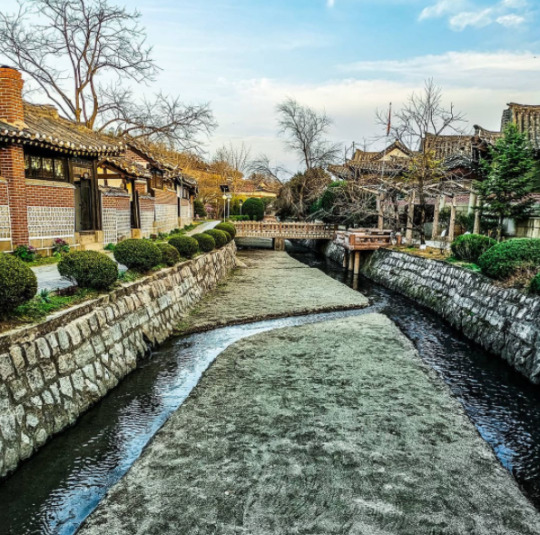

Kaesong's main street, pictured below.
Due the stifling sanctions imposed on the DPRK—which has, in various forms and intensities, been in effect since the 1950s—car ownership is still low throughout the country, with most people getting around either by walking or biking, or by bus or train for longer distances.
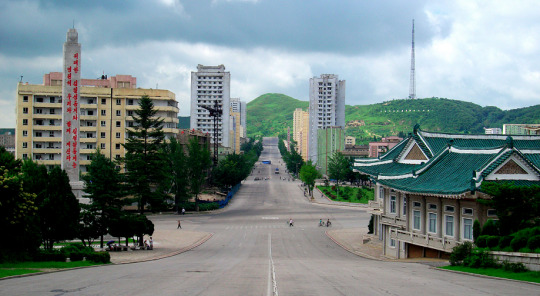
Kaesong, which is regarded as an educational center, is also notable for its many Koryŏ-era monuments. A group of twelve such sites were granted UNESCO world heritage status in 2013.
Included is the Hyonjongnung Royal Tomb, a 14th-century mausoleum located just outside the city of Kaesong.
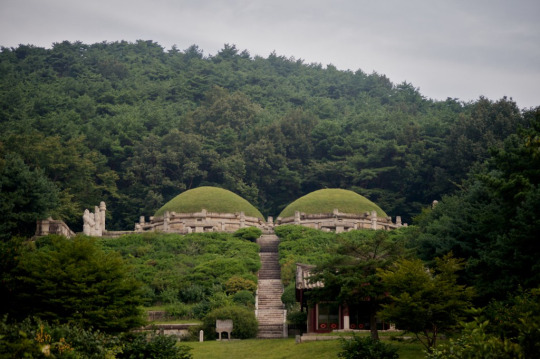
One of the statues guarding the tomb.
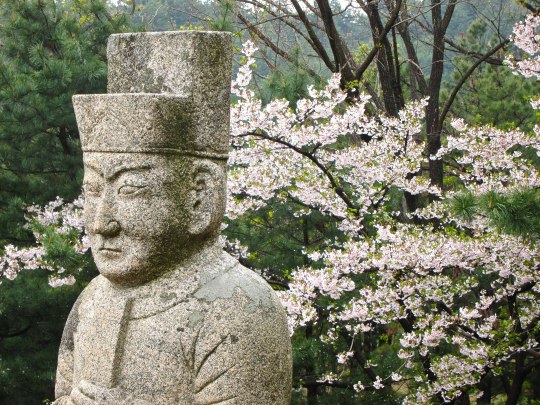
Before moving on the other cities, I also wanted to showcase one more of the DPRK's historical sites: Pohyonsa, a thousand-year-old Buddhist temple complex located in the Myohyang Mountains.

Like many of DPRK's historic sites, the temple complex suffered extensive damage during the Korean war, with the U.S. led bombings destroying over half of its 24 pre-war buildings.
The complex has since been restored and is in use today both as a residence for Buddhist monks, and as a historic site open to visitors.


Hamhung, the second largest city in the DPRK.
A coastal city located in the South Hamgyŏng Province. It has long served as a major industrial hub in the DPRK, and has one of the largest and busiest ports in the country.
Hamhung, like most of the coastal cities in the DPRK, was hit particularly hard during the war. Through relentless aerial bombardments, the US and its allies destroyed somewhere around 80-90% percent of all buildings, roads, and other infrastructure in the city.
Now, more than seventy years later, unexploded bombs, mortars and pieces of live ammunition are still being unearthed by the thousands in the area. As recently as 2016, one of North Korea's bomb squads—there's one in every province, faced with the same cleanup task—retrieved 370 unexploded mortar rounds... from an elementary school playground.
Experts in the DPRK estimate it will probably take over a hundred years to clean up all the unexploded ordnance—and that's just in and around Hamhung.
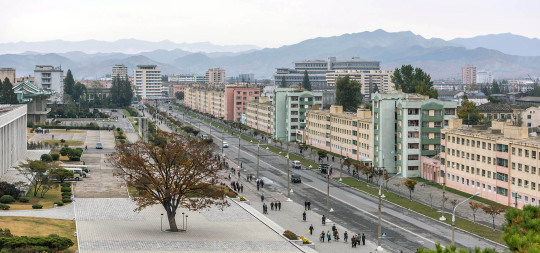

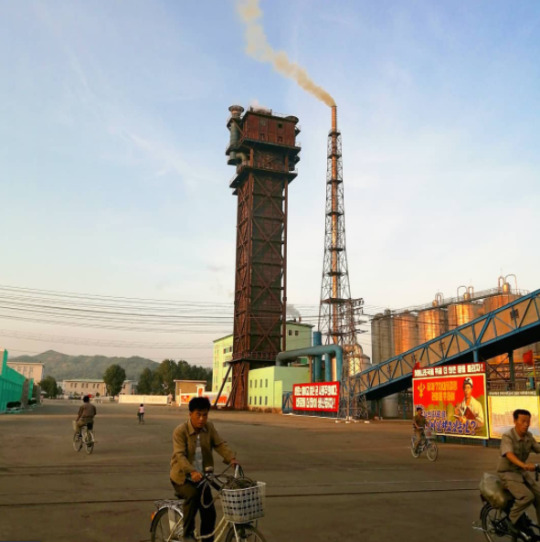
Hamhung's fertilizer plant, the biggest in North Korea.
When the war broke out, Hamhung was home to the largest nitrogen fertilizer plant in Asia. Since its product could be used in the creation of explosives, the existence of the plant is considered to have made Hamhung a target for U.S. aggression (though it's worth repeating that the U.S. carried out saturation bombings of most population centers in the country, irrespective of any so-called 'military value').
The plant was immediately rebuilt after the war, and—beyond its practical use—serves now as a monument of resistance to U.S. imperialism, and as a functional and symbolic site of self-reliance.
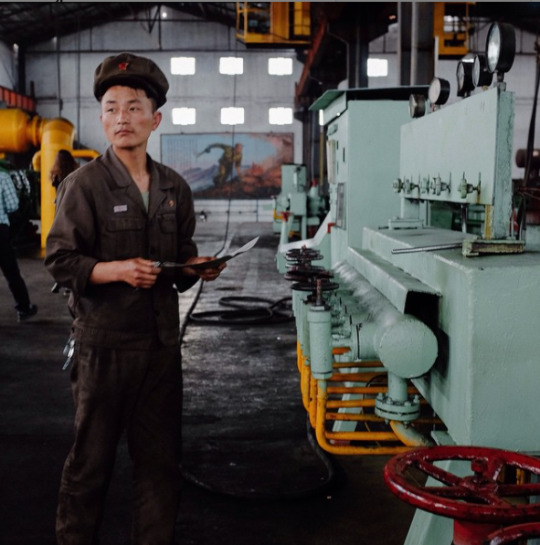
Chongjin, the third largest city in the DPRK.
Another coastal city and industrial hub. It underwent a massive development prior to the Korean war, housing around 300,000 people by the time the war broke out.
By 1953, the U.S. had destroyed most of Chongjin's industry, bombed its harbors, and killed one third of the population.
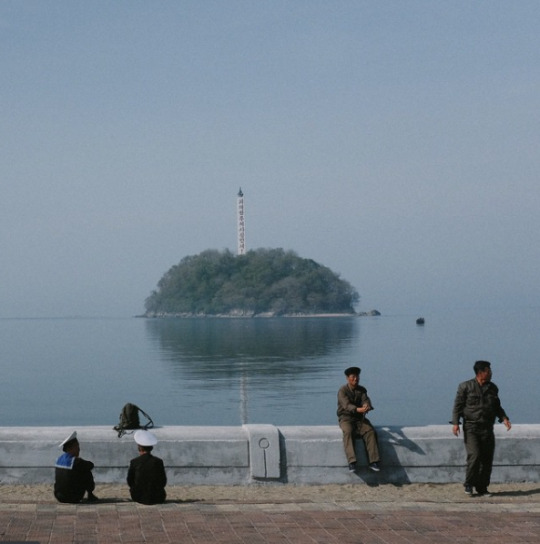
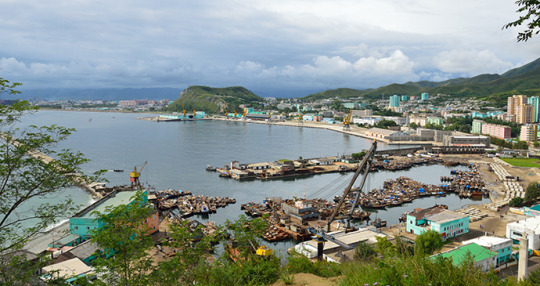

Wonsan, a rebuilt seaside city.
The city of Wonsan is a vital link between the DPRK's east and west coasts, and acts today as both a popular holiday destination for North Koreans, and as a central location for the country's growing tourism industry.
Considered a strategically important location during the war, Wonsan is notable for having endured one of the longest naval blockades in modern history, lasting a total of 861 days.
By the end of the war, the U.S. estimated that they had destroyed around 80% of the city.
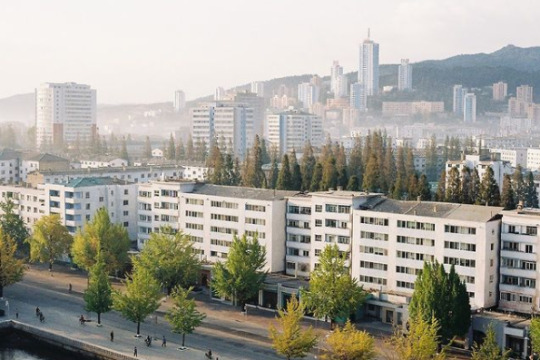

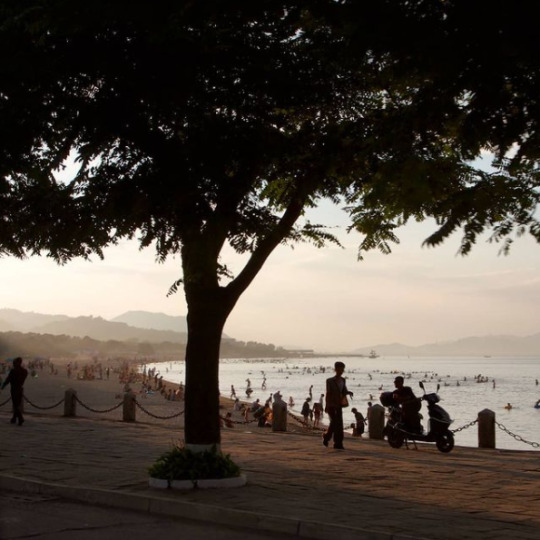

Masikryong Ski Resort, located close to Wonsan. It opened to the public in 2014 and is the first, I believe, that was built with foreign tourists in mind.
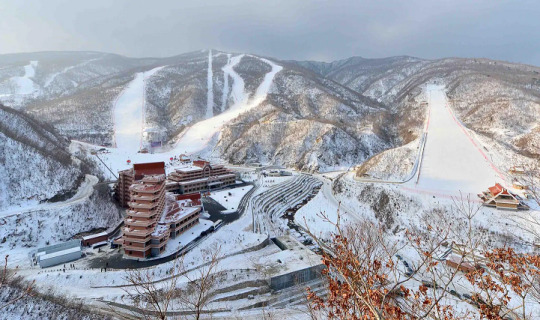
Sariwon, another rebuilt city
One of the worst hit cities during the Korean War, with an estimated destruction level of 95%.
I've written about its Wikipedia page here before, which used to mockingly describe its 'folk customs street'—a project built to preserve old Korean traditions and customs—as an "inaccurate romanticized recreation of an ancient Korean street."
No mention, of course, of the destruction caused by the US-led aerial bombings, or any historical context at all that could possibly even hint at why the preservation of old traditions might be particularly important for the city.
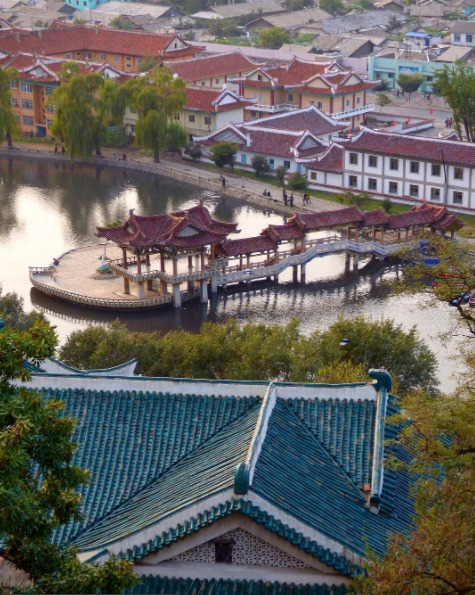

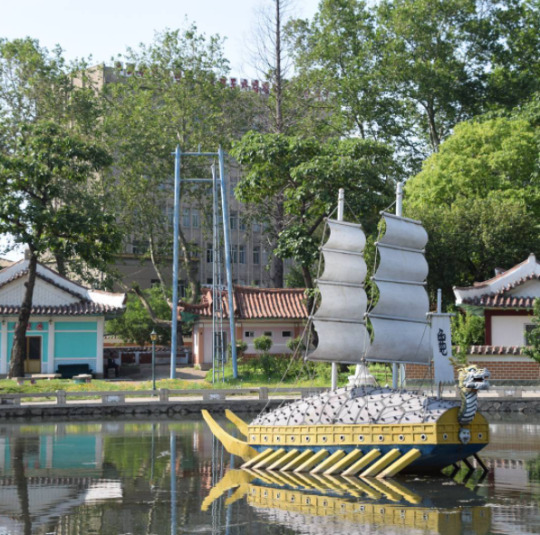
Life outside of the towns and cities
In the rural parts of the DPRK, life primarily revolves around agriculture. As the sanctions they're under make it difficult to acquire fuel, farming in the DPRK relies heavily on manual labour, which again, to avoid food shortages, requires that a large portion of the labour force resides in the countryside.
Unlike what many may think, the reliance on manual labour in farming is a relatively "new" development. Up until the crisis of the 1990s, the DPRK was a highly industrialized nation, with a modernized agricultural system and a high urbanization rate. But, as the access to cheap fuel from the USSR and China disappeared, and the sanctions placed upon them by Western nations heavily restricted their ability to import fuel from other sources, having a fuel-dependent agricultural industry became a recipe for disaster, and required an immediate and brutal restructuring.
For a more detailed breakdown of what lead to the crisis in the 90s, and how it reshaped the DPRKs approach to agriculture, check out this article by Zhun Xu.

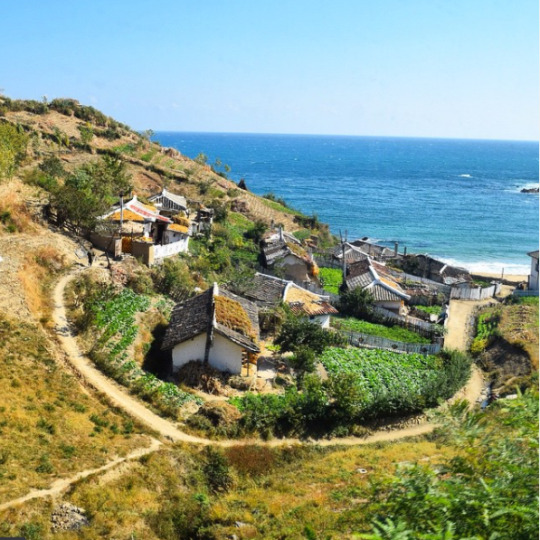
Some typical newly built rural housing, surrounded by farmland.
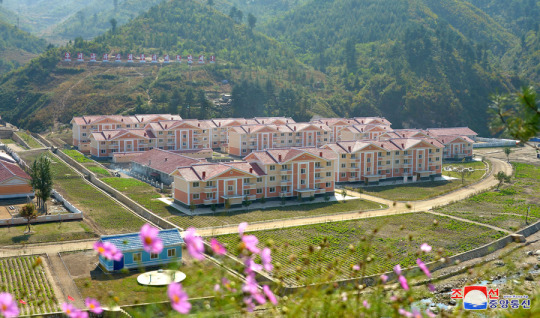
Tumblr only allows 20 pictures per post, but if you want to see more pictures of life outside Pyongyang, check out this imgur album.
#dprk#north korea#i've had this post unfinished in drafts for almost a year#also sorry about the spelling and potential formatting issues it's a nightmare to edit at this point#it was literally just meant to be a collection of picture and then the writing just sort of happened#enjoy the brief heritageposts history lesson i guess
6K notes
·
View notes
Photo

China is in the process of building a "shadow fleet" of tanker ships. This fleet will be used to transport oil to Beijing, and to other parts of the world, in order to ensure that the Chinese government has a secure supply of oil, in the event of a global crisis. The construction of this shadowy fleet is taking place in complete secrecy. Not even the Chinese people know about it. The ships are being built in a hidden shipyard, on the coast of China. This fleet is a sign of China's growing power and influence in the world. It is clear that the Chinese government is preparing for the future, and is not afraid to take whatever steps are necessary to ensure its security.
#Navy#Shipbuilding#China#chinese navy#chinese shipbuilding#Featured#marad#Russia's Shadow Tanker Fleet#Russian Sanctions#shadow tankers#U.S. Navy#fault
1 note
·
View note
Text
By Alejandra Garcia
In September, and for the fourth consecutive year, U.S. President Joe Biden renewed U.S. sanctions on Cuba under the Trading with the Enemy Act (TWEA), an archaic 1917 law designed to cut off trade with Germany during World War I and a significant pillar of the blockade. The announcement means that the economic blockade, a policy upheld by both Republican and Democratic administrations for over six decades, will remain imposed on the island through 2025, despite Cuba’s urgent calls for it to end. Let’s not forget that it was Biden, the democrat who while campaigning for president, said he would improve relations with us.
#OffTheList#CubaVsBloqueo#blockade#Joe Biden#Cuba#socialism#embargo#Democrats#Republicans#imperialism#TWEA#Struggle La Lucha
906 notes
·
View notes